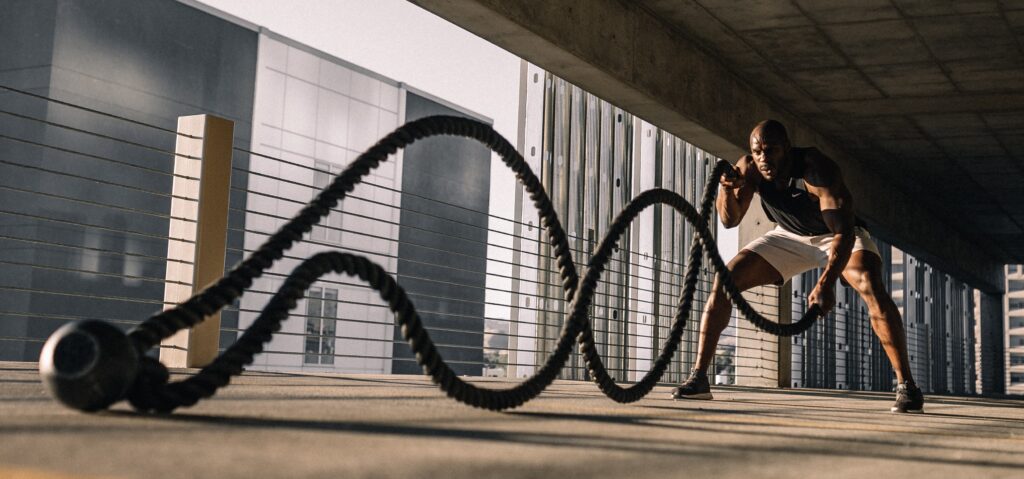
HIIT vs. Steady State Cardio: Which is Better?
When it comes to cardiovascular exercise, there are two popular workout styles that have gained immense popularity in recent years: High-Intensity Interval Training (HIIT) and Steady State Cardio. Both approaches have their ardent supporters, claiming various benefits and advantages.
In the quest for optimal fitness, many enthusiasts find themselves caught in the debate over which method is superior. Both HIIT and steady-state cardio offer unique benefits and drawbacks, making it crucial to understand the nuances of each before making a decision.
In this entertaining and informative blog, we will explore the worlds of HIIT and Steady State Cardio, examining their understanding, benefits, and drawbacks, and ultimately helping you decide which workout style is better suited for your fitness goals and preferences.
Understanding HIIT and Steady State Cardio:
HIIT: High-Intensity Interval Training) is a workout method that involves alternating between short, intense bursts of exercise and periods of active recovery or rest.
The high-intensity intervals push your body to its limits, often to maximum effort, and are followed by short rest periods to allow you to catch your breath before repeating the cycle.
HIIT workouts can be customized to include a wide range of exercises such as sprinting, cycling, rowing, or bodyweight exercises.
Steady State Cardio: Steady State Cardio, on the other hand, involves maintaining a moderate intensity level throughout the entire workout.
This method typically involves exercises like jogging, cycling, swimming, or using cardio machines for an extended period, maintaining a steady pace without significant fluctuations in intensity.
Benefits of HIIT:
Time Efficiency:
HIIT workouts are known for their time-saving nature. With shorter bursts of intense exercise, you can achieve significant results in a fraction of the time compared to traditional cardio sessions.
HIIT workouts typically range from 10 to 30 minutes.
Increased Calorie Burn:
The intense nature of HIIT workouts stimulates a higher calorie burn during the workout itself. Furthermore, due to the “afterburn effect” or excess post-exercise oxygen consumption (EPOC), your body continues to burn calories at an elevated rate even after the workout, aiding in weight loss.
Improved Cardiovascular Health:
HIIT can boost your cardiovascular fitness by increasing your heart rate and challenging your cardiovascular system.
Regular HIIT sessions have been shown to improve aerobic capacity and enhance heart health.
Benefits of Steady State Cardio:
Sustainable Endurance:
Steady State Cardio allows you to sustain an exercise intensity for a longer duration, which can improve your endurance and stamina over time.
It is particularly beneficial for activities that require prolonged periods of effort, such as long-distance running or cycling.
Fatigue Management:
Unlike HIIT, Steady State Cardio places less stress on your muscles and central nervous system, making it an ideal option for active recovery or when you want to give your body a break from high-intensity training.
Mental Well-being:
Engaging in steady-state exercises like jogging or swimming for longer durations can provide a sense of mental clarity, relaxation, and stress reduction.
It can also be an opportunity to connect with nature or listen to music or podcasts, enhancing your overall well-being.
Drawbacks of HIIT:
High Physical Demand:
HIIT workouts can be extremely demanding on your body, especially if you are new to exercise or have certain health conditions.
The high-intensity intervals can increase the risk of injury or overexertion if not performed with proper form and technique.
Not Suitable for Everyone:
Individuals with certain health conditions, such as heart problems, high blood pressure, or joint issues, may need to approach HIIT with caution or seek medical advice before incorporating it into their fitness routine.
Drawbacks of Steady State Cardio:
Time Commitment:
Unlike HIIT workouts, Steady State Cardio sessions typically require a longer time commitment to achieve desired results. If you have a busy schedule, finding the time for longer workouts might be challenging.
Limited Calorie Burn:
Steady State Cardio burns calories during the workout, but the overall calorie expenditure may be lower compared to HIIT due to the consistent intensity maintained throughout the session.
Which is Better? Factors to Consider:
Determining which workout style is better depends on several factors, including your goals, fitness level, available time, and personal preferences. Here are some key factors to consider before choosing your workout style:
- Goals: If your primary goal is fat loss or improving cardiovascular fitness in a time-efficient manner, HIIT might be more suitable. If your focus is on endurance training or active recovery, Steady State Cardio can be the preferred choice.
- Fitness Level: HIIT requires a certain level of fitness and strength to perform high-intensity intervals effectively. Beginners or individuals with lower fitness levels might find it more challenging to jump straight into HIIT and may benefit from starting with Steady State Cardio.
- Time Availability: If time is a limiting factor, HIIT offers a time-saving advantage, as you can achieve a highly effective workout in a shorter duration. However, if you enjoy longer, less intense workouts or have more time available, Steady State Cardio may be a better fit.
Examples of HIIT and Steady State Cardio:
HIIT Example: A 20-minute HIIT workout could include a five-minute warm-up, followed by alternating 30 seconds of intense exercises (such as burpees or sprints) with 30 seconds of rest or active recovery exercises (such as walking or light jogging).
Steady State Cardio Example: A 45-minute steady state jogging session in your local park or on a treadmill, maintaining a moderate pace throughout the workout.
Conclusion:
In the debate between HIIT and Steady State Cardio, there is no definitive answer as to which is better. Both workout styles have their unique benefits and drawbacks, and the choice ultimately depends on your personal goals, fitness level, time availability, and preferences.
Experimenting with both styles and finding a balance that suits your needs might be the best approach.
Remember, the most effective exercise routine is one that you enjoy and can consistently stick to.
Whether you prefer the intensity and time efficiency of HIIT or the steady, endurance-building nature of Steady State Cardio, what matters is that you stay active and make exercise a regular part of your lifestyle.
So lace up your sneakers, choose a workout style that excites you, and embark on a journey to a healthier, fitter you!

You May Also Like

The Top 5 Zumba Moves for a Great Cardio Workout
19 February 2024
Running vs. Jogging: Which Is Better for Your Fitness Goals?
6 April 2024

